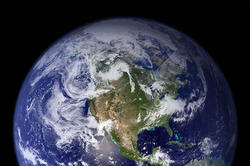A team of Industrial Design students enters The DoGreen Project in the 2020 Biodesign Challenge.
Students Propose Real-World Design Solutions

When environmentally conscious housemates Louis Hand 22 ID and Zoe Lee 23 ID heard about the BlueGreen Innovation Challenge, they dove into an intensive research phase to come up with a viable proposal. Sponsored by SeaAhead, National Grid and the Cambridge Innovation Center, the annual student competition was established to increase the availability of clean, sustainable energy in Rhode Island, enhance sustainability of the Ocean State’s seafood system and promote a circular economy.

“We’re both Industrial Design majors concentrating in Nature-Culture-Sustainability Studies [NCSS], so we’ve been focused on environmental innovation projects all along,” says Lee. “We started reading interviews with local fishermen who noted that mussels and other shellfish were growing at the base of off-shore wind turbines and that large schools of fish were also seen feeding there.”
“We’re both Industrial Design majors concentrating in Nature-Culture-Sustainability Studies, so we’ve been focused on environmental innovation projects all along.”
Hand and Lee teamed up with fellow RISD student Caleb Callaway 24 ID and MIT engineering student Geneva Casalegno on a project called Shellfish Farming on the Block Island Wind Farm, which went on to win first prize in the competition. As the team explains in their winning video, Rhode Island’s waters support a $2.8 billion fishing industry (5% of the state’s total economy), whose future is threatened by climate change and ocean acidification. Since the Industrial Revolution, ocean pH has dropped from 8.2 to 8.1, indicating a 30% increase in acidity.

“But the cooler off-shore waters surrounding wind turbines are cleaner and less acidic, which allows for more oxygen flow,” Hand explains. The team proposed a site-specific system for farming seaweed and shellfish, which grow symbiotically. “The technology was developed in Europe to some extent, but only as a proof of concept,” Lee adds, “not for large-scale application. It seemed like a nice gap in the market and very beneficial for the local community.”
“The cooler off-shore waters surrounding wind turbines are cleaner and less acidic, which allows for more oxygen flow.”
This fall the BlueGreen team will move forward with their shellfish farming research as a Collaborative Study Project (CSP) mentored by zoologist and RISD faculty member Lucy Spelman. “I took a Wintersession class with Lucy called Communicating Science [co-taught by Illustration Professor Susan Doyle 81 IL/MFA 98 PT/PR], and she has been a wonderful mentor ever since,” says Hand. “The NCSS concentration is also a big influence on the work we bring into ID, and conversations about sustainability are growing across campus.”

In addition to their $10,000 prize, the students gained valuable feedback from industry experts. “The competition gave us a comprehensive view of what the blue sector looks like,” says Lee, adding that RISD’s ID department exposes students to multiple design competitions each year, providing outside-the-studio opportunities to come up with innovative solutions.


For example, another group of RISD ID students participated in this summer’s BioDesign Challenge 2021, competing against more than 50 teams from 20 countries to explore future applications of emerging biotechnologies. “We developed The BioCycles Project, which imagines a circular design system where food waste can be harvested for art and biomaterial making throughout studio spaces, dining halls and community gardens at RISD,” team member Avantika Velho 22 ID explains. She partnered with Brown/RISD dual degree students Annie Chen BRDD 23 ID and Matthew Derry BRDD 22 ID on the project, with support from Assistant Professor Katia Zolotovsky, Nature Lab Interim Director Jennifer Bissonnette and Industrial Design Professor Peter Yeadon.

The team discovered that RISD Dining donates most of its food waste to an industrial composter and that the materials students use in studio largely end up in landfills. “Dining halls are a treasure trove of raw materials,” says Chen.
Their project turned eggshells into a fine powder that can be used in bio-composites and transformed coffee grounds and vegetable scraps into inks and mycelium, which students could use in studio. And although the project did not win a prize, it did get students thinking about the best ways to upcycle waste and work collaboratively to create sustainable materials, “turning isolated action into interaction and separation into symbiosis.”
—Simone Solondz
July 22, 2021


